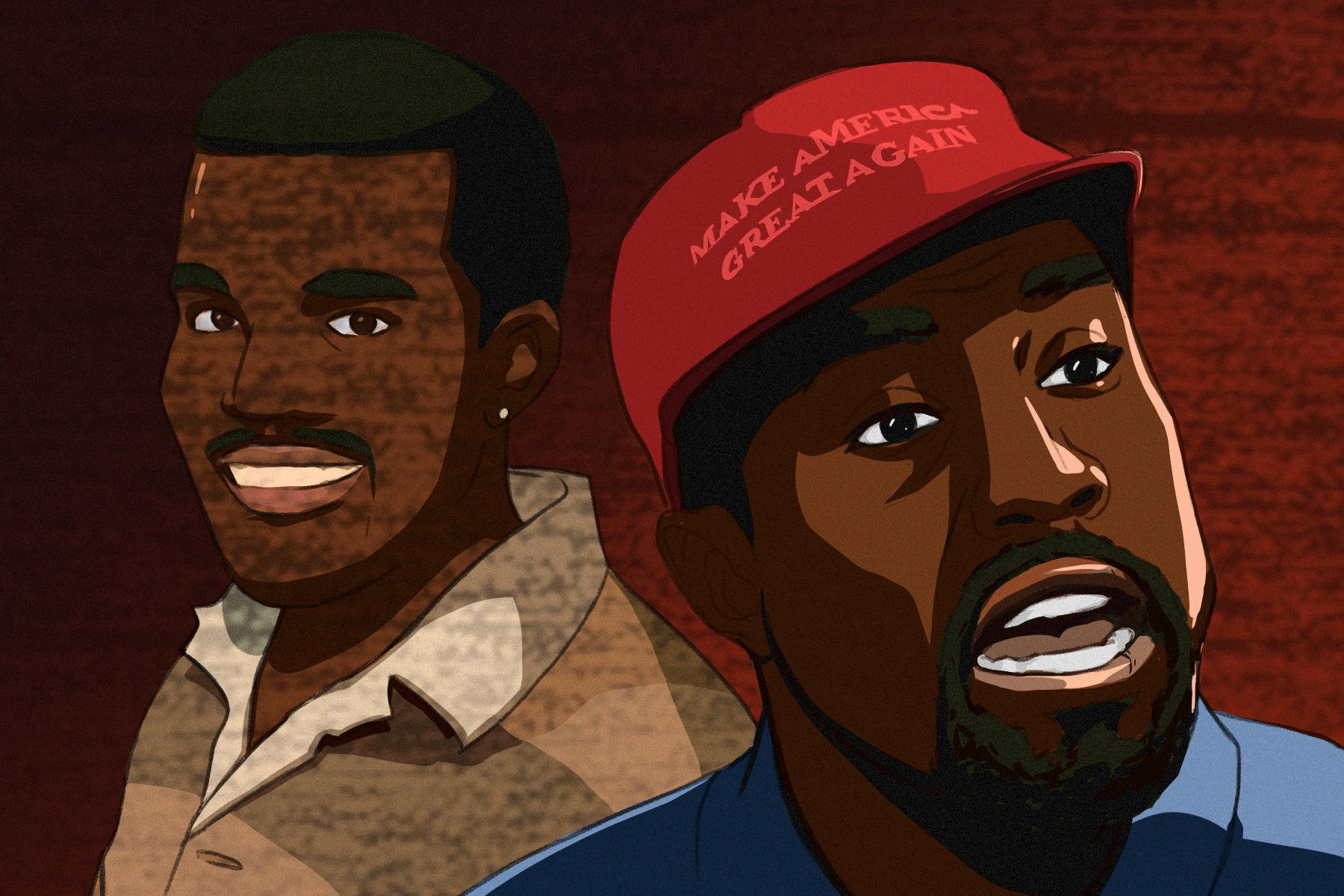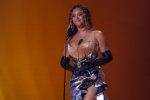“Jeen-yuhs: A Kanye Trilogy,” directed by Coodie Simmons and Chike Ozah, depicts Kanye West’s rise from a small-time producer in the streets of Chicago to one of the most popular and influential artists of this generation.
Ironically, “jeen-yuhs” seeks to be more than a documentary about Kanye. It follows and thoroughly explores a story-driven narrative told from the perspective of Kanye’s close friend, Coodie. A noteworthy detail is that the film does not cut to present-day interviews or personal accounts. All the insight comes from Coodie’s perspective through his handheld video camera and narration. Although it may limit the amount of information the audience receives, this element allows them to gain a more personal and intimate understanding of Kanye’s history that no other angle on the subject could have given.
Acts i, ii, and iii: VISION, PURPOSE and AWAKENING
“Act i” follows Kanye’s mission to get signed by a record label. It opens with Coodie’s first encounter with a young Kanye in 1998. After following him around for a while, Coodie quickly recognizes Kanye’s potential and dedicates his time to document his rise to fame. Although he already found success as a platinum producer on tracks like Jay-Z’s “This Can’t Be Life” and “Izzo (H.O.V.A),” Kanye struggled to be recognized as a rapper within the industry. After countless attempts to prove himself to multiple record labels, Kanye finally signed to Roc-A-Fella Records in 2002.
“Act ii” sees Kanye trying to gain respect from Roc-A-Fella to support the release of his debut album, “The College Dropout.” Falling asleep at the wheel after attempting to drive home from a late-night studio session, Kanye breaks his jaw in a car crash. After months in the hospital and more months facing treatment, Roc-A-Fella completely ignores Kanye, leaving him with no budget to continue making the album. As before, faced with adversity, Kanye persists in making his music and finally gets the attention of Dame Dash (one of Roc-A-Fella’s co-founders) with his music video for “Through the Wire.” In late February 2004, Kanye releases the album and wins best rap album at the 2005 Grammys.
“Act iii” shows the natural falling out and subsequent return of Kanye and Coodie’s relationship as Kanye goes on to pursue more meaningful goals. As Kanye’s fame grew, he became too busy to have Coodie around filming him. The death of Kanye’s mother in 2007 prompts a change in his behavior and alters his relationship with Coodie. This led to a six-year gap before they met again at a Chicago show for Common in 2014. From there, Coodie would only get glimpses into Kanye’s life following the “Life of Pablo” listening event and the controversies of Kanye’s 2020 presidential campaign. Coodie ends the trilogy with a prayer — knowing all that is and all that is to come is in God’s plan.
Self-Confidence and Determination
Kanye is well-known for his arrogance. Today, he is seen as egotistical and self-absorbed and he constantly gets criticized for it. In the 2000s, this trait was viewed as charismatic, which defined and separated Kanye from the rest of the game. It was this aspect of his personality that propelled him to new heights.
“Jeen-yuhs” highlights this on multiple occasions throughout its three parts. In “Act i,” Kanye is shown going office to office in the Roc-A-Fella building blasting his track “All Falls Down,” easily one of his most ambitious and game-changing tracks at the time. However, every employee ignored him. Despite the constant rejection, Kanye’s confidence in his talent and music ultimately allowed him to acquire a record deal.
In “Act ii,” Kanye makes the most out of his unfortunate situation and wastes no time getting back to work. While recovering, he wrote and recorded “Through the Wire” and used Coodie’s footage to create the music video that ultimately secured support from Roc-A-Fella to push “The College Dropout.”
Without a budget, Kanye found other ways to continue making his record, scraping together time by working in other artists’ studios and putting in his own money for video productions. It’s crazy to discover that one of the most iconic rap albums of all time was made in such a modest manner. For many, this situation could have easily deterred one from pursuing their dreams. Kanye, however, didn’t hesitate to keep pushing.
Kanye’s determination inspires others to pursue their dreams and ignore the doubts of others. This message shines through the strongest when Kanye makes a speech to a group of kids at the Kanye West Foundation Fundraiser. Kanye explores his source of determination and asserts that one must first believe in something before they can will it into existence. He states, “And they say ‘overconfident’ like that’s a bad thing. I think overconfident, maybe that needs to be a bad word. How can you be overconfident? You should be overconfident.”
Donda West
“Jeen-yuhs” makes sure to underline how essential Kanye’s mother, Donda West, was in shaping him into the man he was and is. Throughout “Act i” and “Act ii,” most of the footage shows snapshots, one by one, sewn together, making everything feel relatively fast-paced at some points. Still, the scenes with Donda, Coodie and Chike slow down the pace and allow these moments to speak for themselves.
The love Donda had for her son is evident in the way she treated him. It’s endearing to see how she memorized every one of Kanye’s rhymes. Every scene with Kanye and his mom shows her speaking life into him by encouraging him and affirms that she believes in him just as much, if not more than he believes in himself. Their relationship illustrates the impact someone’s words can have on another person’s future.
Hope for Kanye
“Act iii” sees a change of pace and presentation relative to the rest of the documentary. It culminates with Kanye, despite all his losses, as the same person shown in “Act i” and “Act ii.” In his reunion with Kanye, Coodie quickly notes that he recognizes the same man he knew before.
At points when Kanye is struggling with his mental health or otherwise shifting the energy in the room due to a moment of uncertainty, Coodie stops filming. Out of respect for his close friend, he cuts the camera. The impact is immeasurable as ultimately, Coodie’s camera is a stand-in for the audience’s perspective. Ending the documentary with a prayer for Kanye and those watching, Coodie is trying to tell people to seek to understand others better. If all were more accepting of differences, there would be more genius in the world.
















